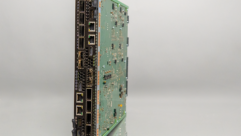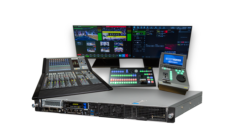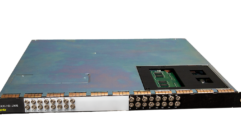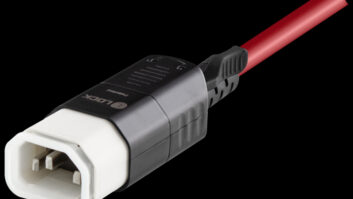High Definition Television
May 1, 1998 12:00 PM,
Peter H. Putman
Unless you’ve been marooned on a desert island for the past few years,you’ve surely heard the hype about the new television standard to be phasedin over the next ten years or so. Popularly known as high-definitiontelevision or HDTV, this is a system of transmitting and viewing images(and hearing audio) vastly different from the old NTSC system we’ve come toknow and love over the past 50 years.
As usual, the general press has completely confused everyone with accountsof the various digital standards and widescreen images, not to mention theumpteen million high resolution picture formats. Some digging around on mypart for another article on HDTV revealed a similar amount of confusionwithin the broadcast and production industries, particularly when it comesto the eventual adoption of an HDTV standard.
Well, we all know about standards-there are hundreds of them flowingthrough the cables in our boardroom, classroom and exhibit installations.Have you had enough fun with all the variations of VESA, XGA andworkstation sync and refresh rates? Get ready for a few more, because theactual HDTV/DTV (that’s digital television) standards have more than adozen variations.
The digital difference The key to understanding HDTV in 1998 (and how itdiffers from NTSC) is to first grasp this point: HDTV is currently definedas a digital standard, not analog. Admittedly, the HDTV signal must atsome point be converted back to an analog signal to be viewed on a monitoror projector. Otherwise, it remains a large collection of data bits.
In contrast, NTSC (and PAL) is an analog signal subject to the vagaries ofanalog signal artifacts and noise. You can see an NTSC signal on aconventional waveform analyzer, but not a baseband digital HDTV signal.Older versions of HDTV, such as Japan’s 1125/50 system, are analog signalscombining luminance, chrominance and sync burst just like an NTSC signal.They too can suffer from noise and signal degradation.
Adopting a digital television system is one way to clean up TV pictures andfilter out picture artifacts. It is also a great way to move the largeamounts of data around that an HDTV image requires, using MPEG videocompression and expansion. Most importantly, a digital system means thatmultiple picture formats can be transmitted within each HDTV channel, a technical feature that appeals to some broadcasters and repels others.
The current FCC standards for high-definition television are based on workdone by the Advanced Television Standards Committee (ATSC). Its goal was tocome up with both a higher resolution and widescreen version of television,and they’ve done that in several different ways that leave the ultimatestandard defining to the producers and broadcasters who buy the equipment.
Just the sync rates At present, there are two pixel-by-line specificationsfor HDTV in the ATSC standard. The first calls for a picture with 1,920horizontal pixels by 1,080 vertical lines, while the second calls for apicture with 1,280 horizontal pixels by 720 vertical lines. The aspectratio of both formats works out to 16:9 (there’s that magic number), andthe vertical resolution of both formats exceeds the more than 480 lines nowfound in the NTSC system. Thus, these two formats are the only true HDTVstandards on the table.
ATSC also proposed several digital standard definition television (SDTV)formats. The first measures 704 horizontal pixels by 480 lines, and thesecond 640 pixels by 480 lines. The 704 x 480 format is considered 16:9,although the math tells you it’s more rectangular in shape. Of course, 640x 480 is identical to the garden-variety 31.5 kHz VGA computer display.
Now, here’s where things get tricky. A broadcaster can transmit one 1,920 x1,080 interlaced signal within a channel, or several 480-line images. Or,he could combine two 640 x 480 signals with one 1,280 x 720 image. Yetanother option would be just to transmit a slew of 480-line digitalsignals, all in 4:3 format. All of these options are possible because ofthe digital bitstream that characterizes HDTV.
To further complicate matters, there are several picture refresh rates andscan formats that can be selected. The 1,920 x 1,080 format can bedelivered at 24 or 30 frames per second in progressive scan, or at 60fields per second with an interlaced scan. Ditto for the 1,280 x 720 formatat 24 and 30 frames per second, except that its 60 Hz rate is progressive,not interlaced. The SDTV signals can be delivered with 24, 30 or 60 framesper second progressive scanning and 60 field interlace scanning.
All of this is probably beginning to look like the computer monitorscan/sync rate tables found in Extron’s Handbook of Computer/VideoInterfacing. The truth is, only a few of these formats are currentlysupported. The 1,920 x 1,080 interlaced specification looks like it will beused by at least two major television networks (CBS and NBC), while 704 x480 progressive appears to be the other popular choice, as it was intendedto be backwards-compatible with existing 525-line interlaced signals.Dual-standard production equipment will be able to record 16:9 and 4:3 inthis mode, currently favored by Fox and ABC.
Just what does all this mean to an A-V professional? In terms of signalconversion and displays, decoded 1,920 x 1,080 interlaced images fallsomewhere between XGA and SXGA in terms of vertical resolution, althoughthe picture sync rate is much lower (less than 34 kHz), thanks to theinterlaced signal. This means that variable-resolution displays that useCRTs to write scan lines are HDTV-ready if they can support at least VESA 1(35.2 kHz, 56 Hz) scan rates and have Y/Pb/Pr component inputs.
There’s a catch. The vast numbers of plasma display panels coming into themarket have a native resolution of 852 x 480-closer to the 480 progressivestandard than true HDTV. Some sort of pixel mapping has to happen torewrite the high-definition images to fit these displays, which are reallybetter suited to the 704 x 480 format.
Direct-view monitors with 16:9 aspect ratios and higher resolutions arealready in the professional A-V market. Panasonic introduced the DTV-2730H27 inch (686 mm) HDTV presentation monitor, with sync rates to 70 kHzhorizontal and 120 Hz vertical. It supports both the 1,080 interlaced and720 progressive standard, although its specified maximum resolution isgiven as 1,024 x 768 in RGB mode. Conventional multisync displays will notbe able to show a full 16:9 image, unless their picture dimensions can bescaled down both horizontally and vertically or the HD-source signal isscan-converted.
In terms of bandwidth, a decoded HDTV signal should slide quite nicelyalong any existing RGBS plant wiring that has been optimized at the leastfor XGA graphics cards. The same holds true for distribution amps andswitchers (remember, we’re talking the decoded analog version here) becausethe highest progressive-scan mode likely to be used will be 1,280 x 720. Ineffect, decoded HDTV just becomes another RGB signal with a picturedimension easily configured and retained in an installation-grade,large-screen display.
For production and post-production facilities, the HDTV digital packet rateof 1.5 Gbps may require a massive rewiring and conversion to fiber-opticbundles to expand system bandwidth. But hold on, there’s a proposedsolution making the rounds from Tektronix. It calls for mezzanine-level(light-level) digital compression of HDTV signals into the 270 Mbps to 360Mbps range to accommodate them within existing serial digital (SD) CCIR-601installations.
The theory here is that both digital NTSC and HDTV can share the samespace, using down and up conversion where needed to add things like localstation “bugs,” those annoying logos in the lower right corner of a TVimage that seem to get bigger every year. This could help many broadcastersmake the switch over to advanced digital television without driving theminto bankruptcy.
For the A-V marketplace, the Tektronix scheme means that cableinfrastructures serving digital NTSC video to displays could be adapted topiggy-back lightly compressed HDTV around at the same time. Indeed, severallarge-screen displays and interfaces now offer direct SDI inputs.
Note that most of these products are designed to accept serial digital525-line video, not digital HDTV. Even compressed HDTV will lose somethingin the translation when connected through a 4:2:2 input (it’s sampled at ahigher rate), so some sort of format converter will likely be needed.
Technical considerations aside, HDTV produces some dazzling pictures. That,along with the ability to show widescreen video, is really what the buzz isall about. From an infrastructure standpoint, the real technical andfinancial burdens will fall upon producers and broadcasters of HDTVprogramming. For them, this means adding digital equipment to analogfacilities or upgrading existing digital plants that may not be all thatold to begin with. It’s a task tantamount to climbing Mt. Everest in theireyes-lots of money must be expended, and the financial risks could beextreme.
>From the professional A-V viewpoint, we’re essentially already on top ofthat mountain, waiting for everyone else to catch up. In the meantime, itwouldn’t hurt to bone up on digital signal compression and processingtechniques while paying close attention to developments in the interfaceand display markets. Look for a few HD-compatible projectors, monitors andvideo scalars at INFOCOMM ’98, and check out the large-venue section of theProjection Shoot-Out, where one of the test sources will be HDTV.










